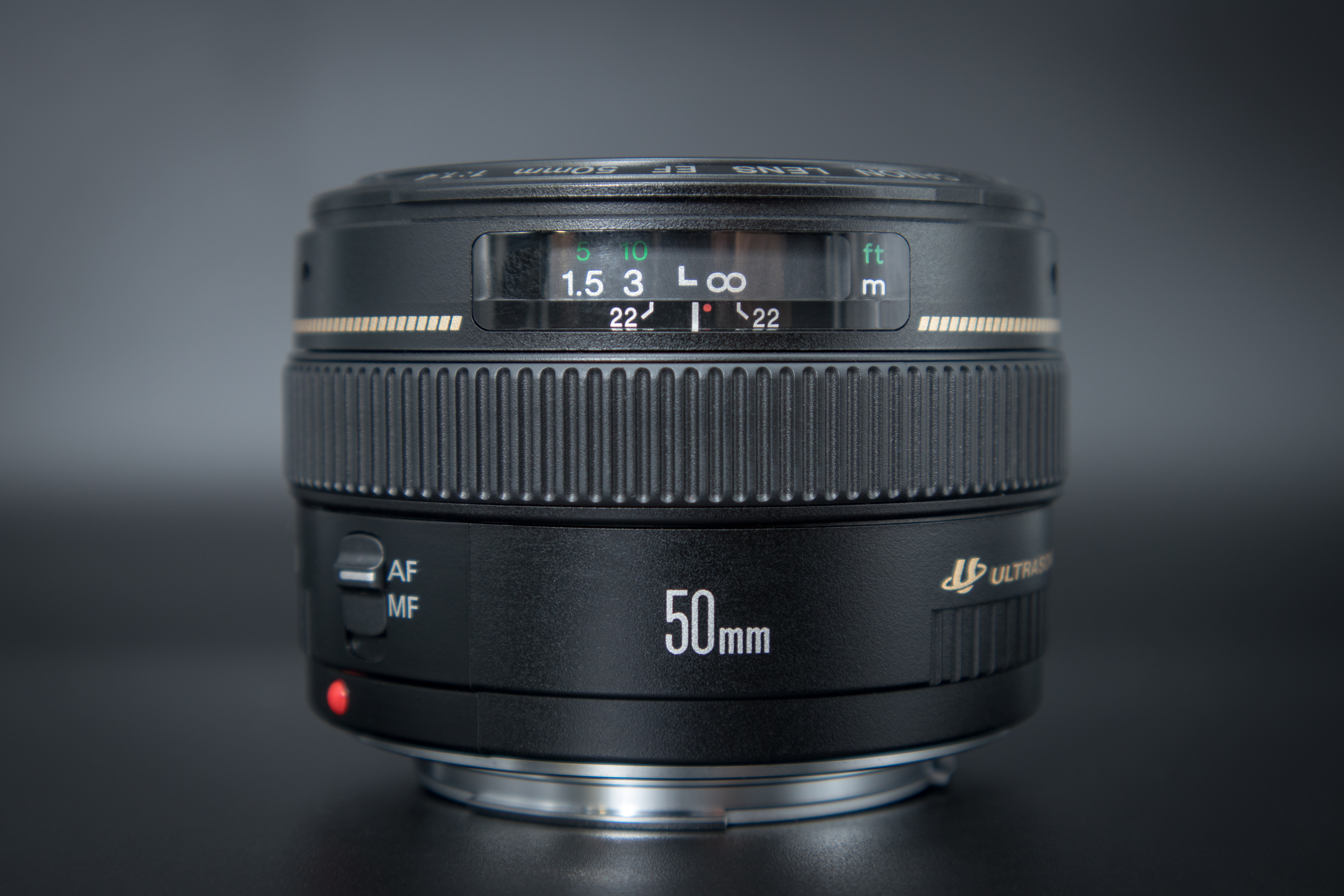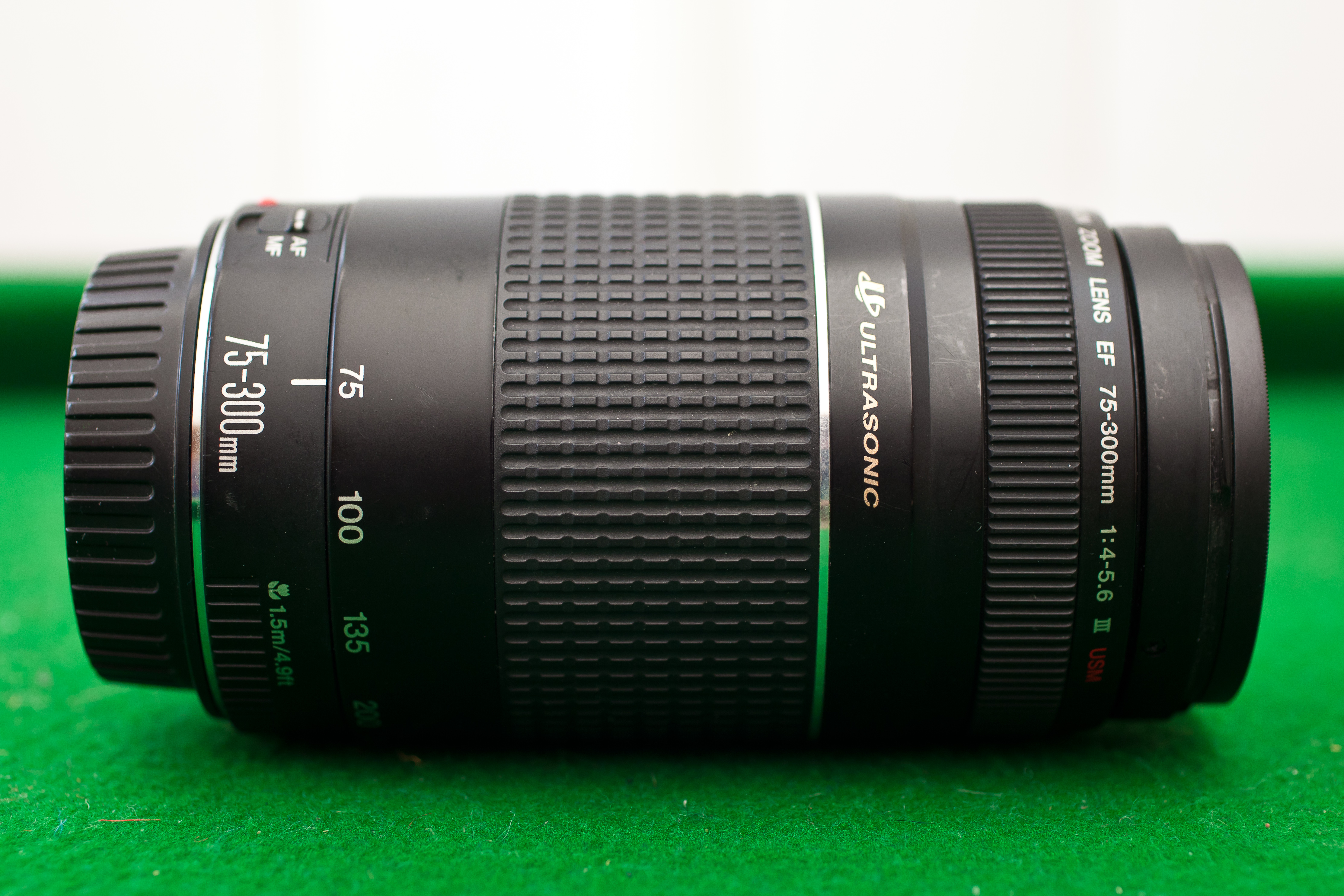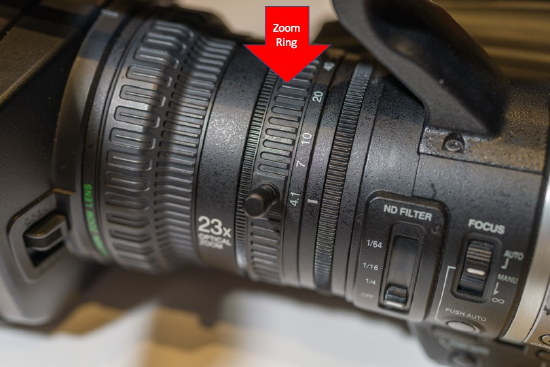7.11: Lenses
- Page ID
- 124317
Built-in or Interchangeable Lenses
When it comes to lenses, cameras will either have a built-in zoom lens or will have the ability to change lenses. If you have a camera that has interchangeable lenses, it is important to understand that there are two different kinds of lenses, prime and zoom. We’ll go over those here.
Prime Lens
Prime lenses are lenses that have one focal length (See figure 7.11.1). There is no zooming in or out. Depending on the lens you buy, they can be almost any focal length, like 15mm, which has a very wide field of view, or 300mm which has a very narrow field of view. Each one has its own advantages depending on your production needs. One of the advantages of a prime lens is that their f-stops can usually go lower than those of zoom lenses. Some prime lenses can go down to f-1.4 or even 1.2. This is good for increasing your depth of field (which we will go over in the next chapter) and being able to get quality images in lower lighting situations. Another advantage of using prime lenses is that they produce sharper and higher-quality images. With fewer lens components there is less distortion and less chromatic aberration.

A disadvantage of using a prime lens with one focal length is having to change lenses if you want to change the focal length. If you want to get closer to an object and not change lenses, you will have to move your body closer to the image. It can also be expensive to buy all the focal lengths you will need for different production situations.
Zoom Lens

Zoom lenses have variable focal lengths that can be changed with the turn of a ring (See figure 7.11.2 above) or the use of a zoom control called a servo zoom (See figure 7.11.4 below). Some of the most common zoom lenses are: 24-105mm; 24-70mm, 70-200mm. These lenses offer great variability when in the field to get shots of different sizes without needing to move the camera itself. This comes in handy when there is a lot of movement in the shot. One of the disadvantages of using a zoom lens is there may be more distortion and chromatic aberration due to the number of components in the lens itself.
Zoom Controls

(CC BY-NC 4.0; Sebastian Jimenez via San Francisco State University)
There are two ways to control a zoom lens, either manually, by using the zoom ring on the lens itself, or by using the zoom servo. Figure 7.11.3 shows the switch to allow the camera to be set for manual zoom or zoom servo. You cannot use both at the same time.
Zoom Servo
Video cameras most commonly have electronic zoom servo buttons on the camera that are touch-sensitive, which means that if you push the button down lightly, the zoom will be slow, but if you push it down harder, the zoom will be faster. In figure 7.11.4 below, W on the Zoom servo button stands for wide, which means zoom out, and T stands for tight, which means zoom in.

(CC BY-NC 4.0; Sebastian Jimenez via San Francisco State University)
Zoom Ring
Figure 7.11.5 below shows where the zoom ring is on a video camera lens. DSLRs and mirrorless cameras do not have a servo zoom built-in. This means you have to be very careful with live zooms and practice having a steady hand as you zoom. Zooms should be at a steady and consistent pace throughout the zoom and the image and the movement must not be jumpy. There are attachments you can buy to put on the Zoom ring to help with making a zoom smoother. Whether you use the attachment or not, there needs to be practice and rehearsals before you record the shot to make sure the movement is steady and smooth.

(CC BY-NC 4.0; Sebastian Jimenez via San Francisco State University)


